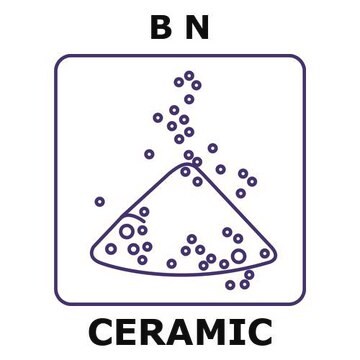900710
Boron nitride
nanoplatelet, 0.1-0.5 mg/mL in H2O
Synonym(s):
2D Dispersion, BN Dispersion nonionic surfactant, BN Dispersion with Pluronic F87
About This Item
Recommended Products
form
dispersion
greener alternative product characteristics
Design for Energy Efficiency
Learn more about the Principles of Green Chemistry.
sustainability
Greener Alternative Product
concentration
0.1-0.5 mg/mL in H2O
particle size
≤500 nm
bp
100 °C (water)
density
0.9-1.1 g/mL at 25 °C
greener alternative category
, Enabling
InChI
1S/BN/c1-2
InChI key
PZNSFCLAULLKQX-UHFFFAOYSA-N
Looking for similar products? Visit Product Comparison Guide
General description
Application
Legal Information
Storage Class Code
12 - Non Combustible Liquids
WGK
WGK 1
Flash Point(F)
Not applicable
Flash Point(C)
Not applicable
Choose from one of the most recent versions:
Already Own This Product?
Find documentation for the products that you have recently purchased in the Document Library.
Articles
Advances in scalable synthesis and processing of two-dimensional materials
Our team of scientists has experience in all areas of research including Life Science, Material Science, Chemical Synthesis, Chromatography, Analytical and many others.
Contact Technical Service





